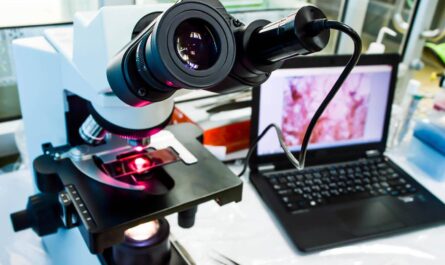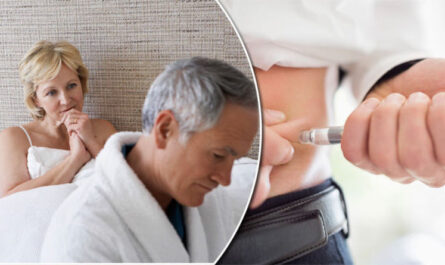
Introduction
Modern dentistry has made remarkable progress in restoring teeth and jaw bones that were once thought to be unsalvageable. New biomaterials such as dental membranes and bone graft substitutes are playing a key role in enabling procedures like guided bone regeneration (GBR) and sinus lifts that help regenerate missing tooth supporting bone. In this article, we will explore these biomaterials, how they work, and their importance in modern regenerative dentistry procedures.
Dental Membranes
Dental membranes, typically made of collagen or synthetic polymers, act as a barrier during GBR procedures. They are placed over an area of missing tooth supporting bone where new bone growth is desired. The membrane separates the area to heal from surrounding soft tissues like gum tissue that could interfere with new bone formation. Several types of dental membranes are commonly used:
Collagen Membranes
Collagen, which is a structural protein found in connective tissues, is one of the most widely used natural materials for dental membranes. Collagen membranes are biocompatible and breakdown slowly as new bone forms underneath. They come either from bovine or porcine sources. While collagen membranes are easy to use, they do have limitations like potential for early exposure due to partial reabsorption.
Resorbable Synthetic Membranes
Synthetic materials like polytetrafluoroethylene (PTFE), poly(lactic-co-glycolic acid) (PLGA), and poly(epsilon-caprolactone) (PCL) are used to make resorbable synthetic dental membranes. Compared to collagen, they have improved mechanical stability and slower degradation for extended guided bone regeneration. However, they lack some of collagen’s bioactive properties.
Non-Resorbable Membranes
Titanium-reinforced or high-density PTFE membranes are non-resorbable and require removal after sufficient new bone has formed. They provide long-term space making but require a second surgery. Hence resorbable alternatives are preferred.
Bone Graft Substitutes
When dental membranes are used, they often need to be combined with a bone graft material to fill the defect site and provide an osteoconductive scaffold for new bone growth. Following are some commonly used bone graft substitutes in modern dentistry:
Autologous Bone Grafts
Autologous bone (from the patient’s own body, usually hip or chin area) is still considered the gold standard graft material due its osteoinductive and osteoconductive properties. However, it requires an additional surgical site and has limitations of available donor volume.
Allografts
Allografts are transplants containing human donor bone tissue. While allografts avoid donor site morbidity, issues exist with disease transmission risk and variability or loss of osteoinductivity after processing.
Xenografts
Bovine- or porcine-derived bone substitutes like Bio-Oss are popular xenograft options. They are readily available, stable, and show good biocompatibility and osteoconduction. However, they lack osteoinductive potential and new bone formation depends on host bone cells.
Synthetic Bone Substitutes
Calcium sulphate, hydroxyapatite, beta-tricalcium phosphate, and bioactive glasses are widely used synthetic graft materials. They are very biocompatible but have limited ability to induce new bone on their own compared to natural grafts. When combined with growth factors or cells, their osteoconductivity can promote more new bone ingrowth.
Combining Dental Membranes and Bone Grafts
When GBR and bone regeneration procedures are performed using dental membranes, bone graft substitutes are needed underneath the membrane to act as scaffolding for new bone formation. Collagen membranes are often paired with xenografts like Bio-Oss or synthetic bone substitute granules to provide both barrier function and osteoconductive scaffold in defect sites. Over months of healing, the membrane prevents soft tissue interference while the graft material is replaced by new patient bone underneath. The membrane eventually resorbs as the regenerated bone achieves sufficient thickness and quality for dental implant placement or preservation of oral structures.
Clinical Applications and Outcomes
GBR using dental membranes and bone graft substitutes has enabled successful regeneration and reconstruction of severe defects resulting from tooth extractions, periodontal disease, cysts, tumors or traumatic injuries. Post-extraction socket preservation using this approach can preserve 90% or more of the original bony walls. Sinus lifts can significantly increase the amount of available bone in the posterior maxilla. Studies show dental implants placed after GBR have survival rates comparable to implants in pristine bone. Hence these regenerative techniques are essential for salvaging teeth or restoring adequate bone for implant treatments in many patients who would otherwise lose oral function.
Conclusion
Dental membrane and bone graft substitute biomaterials are key enabling technologies driving the paradigm shift towards regeneration instead of replacement in modern dentistry. When utilized in GBR procedures, they have transformed our ability to rebuild deficient tooth supporting structures and preserved jaws. This has helped maintain more natural dental function and confidence through smile and oral function preservation for countless patients worldwide. Continued research is further enhancing their regenerative capacity, with the ultimate goal of fully replacing lost tissues with living patient bone.
*Note:
1. Source: Coherent Market Insights, Public sources, Desk research
2. We have leveraged AI tools to mine information and compile it


